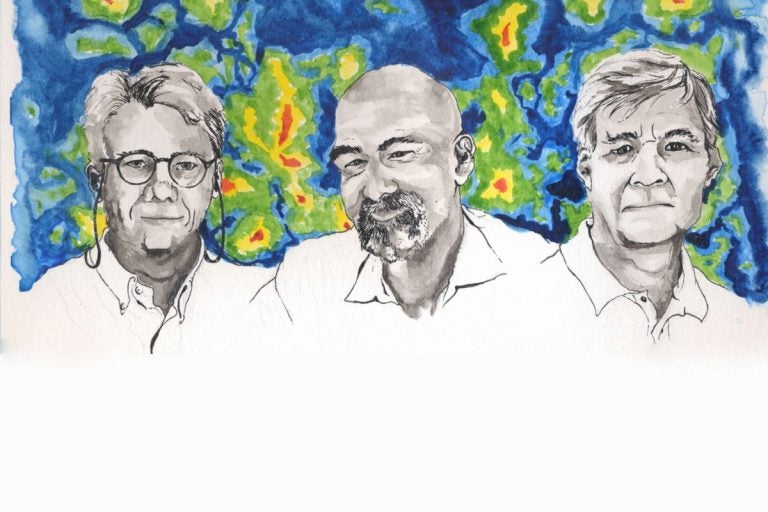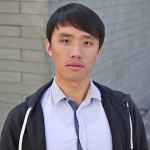Princeton scientists win $3 million for early pictures of the universe
The research uses billion-year-old radiation to confirm the universe's age and how quickly it expanded after the Big Bang.
Listen 1:58
Princeton scientists (from left) Lyman Page, David Spergel and Norman Jarosik have been honored for their pioneering work on the Wilkinson Microwave Anisotropy Probe that generated a map of the early universe. They share the $3 million Breakthrough Prize in Fundamental Physics with the rest of the 27-person WMAP team. (Matilda Luk/Princeton University Office of Communications)
A group of researchers at Princeton University has won a $3 million Breakthrough Prize for fundamental physics work in mapping what the universe looked like billions of years ago. It’s research that has become a standard model in cosmology.
If you ever used an old-school TV, you’re familiar with the white, fuzzy static you get when you’re between channels. About 1 percent of that static comes from your TV antenna picking up cosmic radiation that’s billions of years old, radiation that’s been flying around since the time of the Big Bang.
If you want to study the early universe, you want a TV antenna that is finely tuned to just the white fuzz that is associated with the Big Bang.
So a few physicists, including Lyman Page of Princeton University, did just that.
“If you look at the satellite, it looks like two back-to-back TV satellite dishes,” he said.
The research team sent this satellite — the Wilkinson Microwave Anisotropy Probe — into space in 2001.
The probe was tuned to five specific bands of light that have been around since the Big Bang, and it measured tiny temperature variations to make a heat map of the early universe.
It’s like getting a picture of the universe in its early phases, said scientists.
“The further out you look, the further back you look in time,” Page said. “You look at the universe as it was earlier and earlier and earlier, and, by rolling that out, you can see the history of the universe.”
Because of that work, we now know the universe is 13.8 billion years old, that the universe expanded dramatically after the Big Bang, and that the vast majority of the universe is actually made of dark energy and dark matter, which we’re still learning about.
The researchers, including 17 from Princeton, were honored at a ceremony in California.
The guests at the ceremony included many Hollywood celebrities along with the award-winning scientists. When college freshmen at Princeton ask astrophysicist David Spergel about how the universe expanded after the Big Bang, he can now tell them Morgan Freeman had the same question.
“That’s what Morgan Freeman asked me … I was describing how we have a Galilean and Newtonian notion of space and time, and we have to think about space and time the way Einstein taught us, so that was our dinner conversation,” he said.
The probe was shut down in 2010, but the research continues with more advanced and more sensitive satellites, including an observatory that will be built in Chile’s Atacama Desert. University of Pennsylvania astronomer Mark Devlin is one of the scientists involved in that project.
WHYY is your source for fact-based, in-depth journalism and information. As a nonprofit organization, we rely on financial support from readers like you. Please give today.





